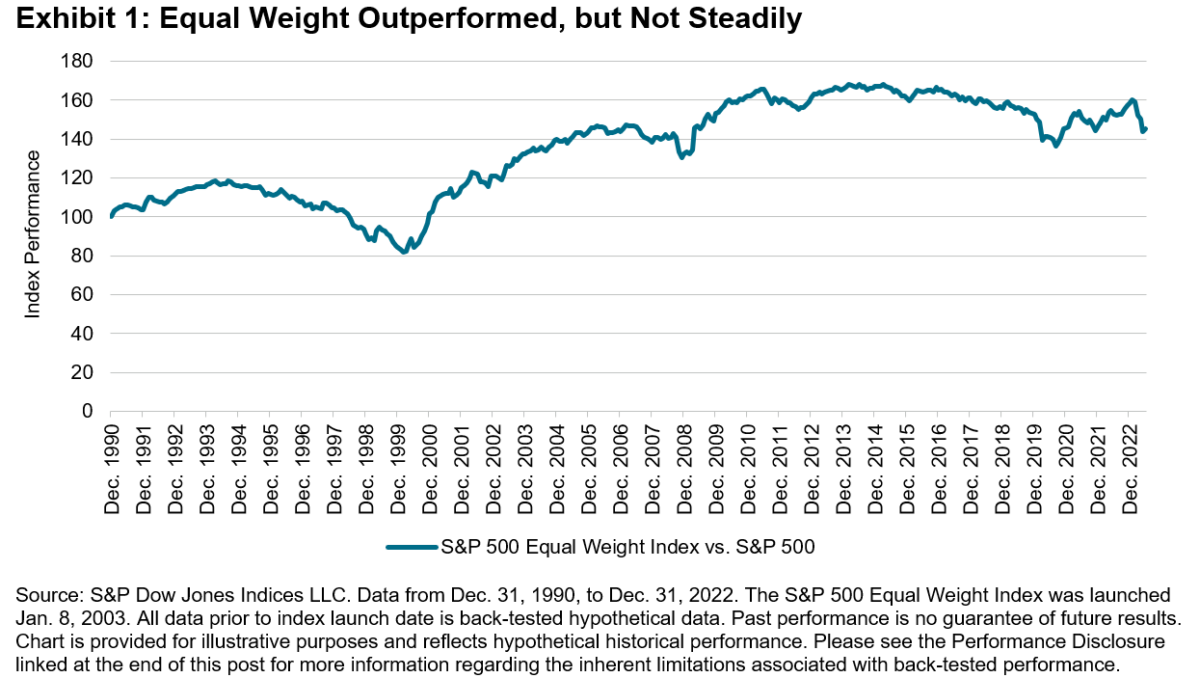Equal Weight Index and Return to the Mean
January, 10 2024
Fortitude is most required when its potential benefit is great.
Over more than 20 years of live history, the S&P 500 Equal Weight Index has outperformed the S&P 500 by a substantial margin.
Between Dec. 31, 1990, and June 30, 2023, Equal Weight’s compound annual growth rate was 11.82%, well ahead of the cap-weighted S&P 500 at 10.55%. This performance edge is a product of robust underlying characteristics, most importantly a tilt toward smaller-capitalization stocks.
Equal Weight’s historical returns have outpaced those of virtually every active large-cap U.S. equity portfolio But the candid observer must recognize that Equal Weight’s performance advantage does not accrue smoothly.
The chart below plots the ratio of performance between Equal Weight and the cap-weighted S&P 500. When the lineis rising, Equal Weight is outperforming; a falling line indicates cap weight outperformance.
As it suggests, there can be long periods of both under- and outperformance.
If the historical distribution of returns is a fair representation of the future distribution, this means that the Equal Weight – cap weight spread is far more likely to rise than to fall.
Remember Stein’s Law: “If something cannot go on forever, it will stop.”
But when? Who knows, but like so many issues in investment management, agnosticism is the most prudent response.
Nonetheless, the data do tell us something important about the speed with which market trends can reverse.
The worst six-month interval for the relative performance of Equal Weight ended with the technology bubble in February 2000, as Equal Weight lagged the S&P 500 by 10.79%. The best six-month interval for the relative performance of Equal Weight ended in February 2001, when Equal Weight outperformed by 20.04%.
The gap between the worst and the best readings in hte 32-year history was only 12 months.
Successful asset management sometimes requires holding positions when one’s natural instinct is to sell. Fortitude is most required when its potential benefit is great.
Stay tuned





